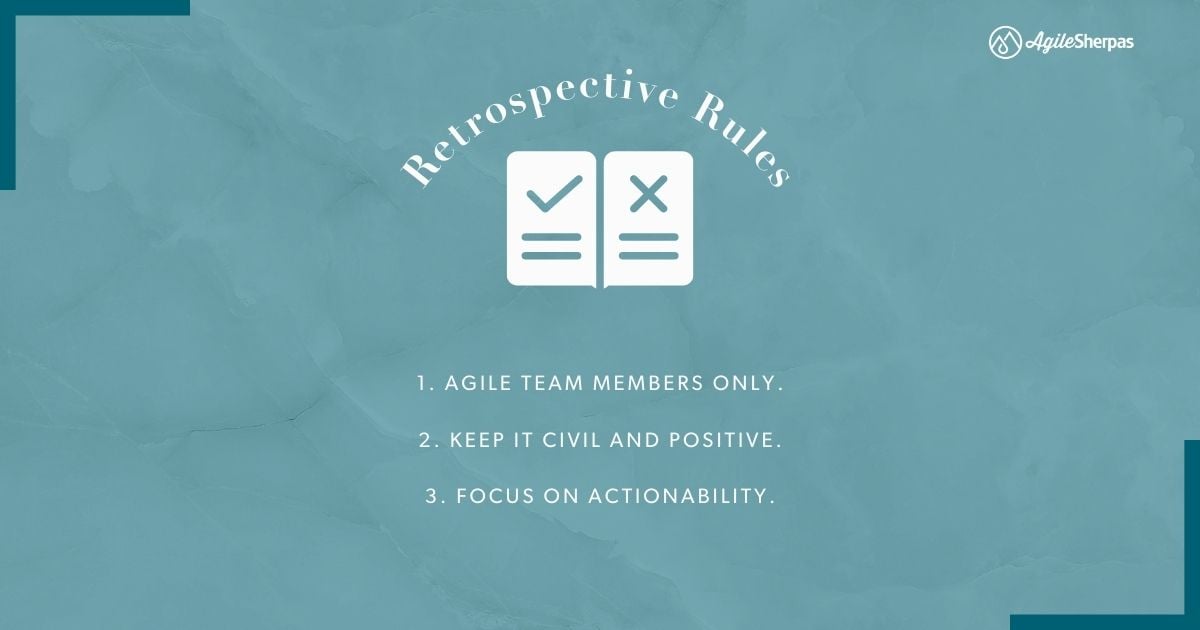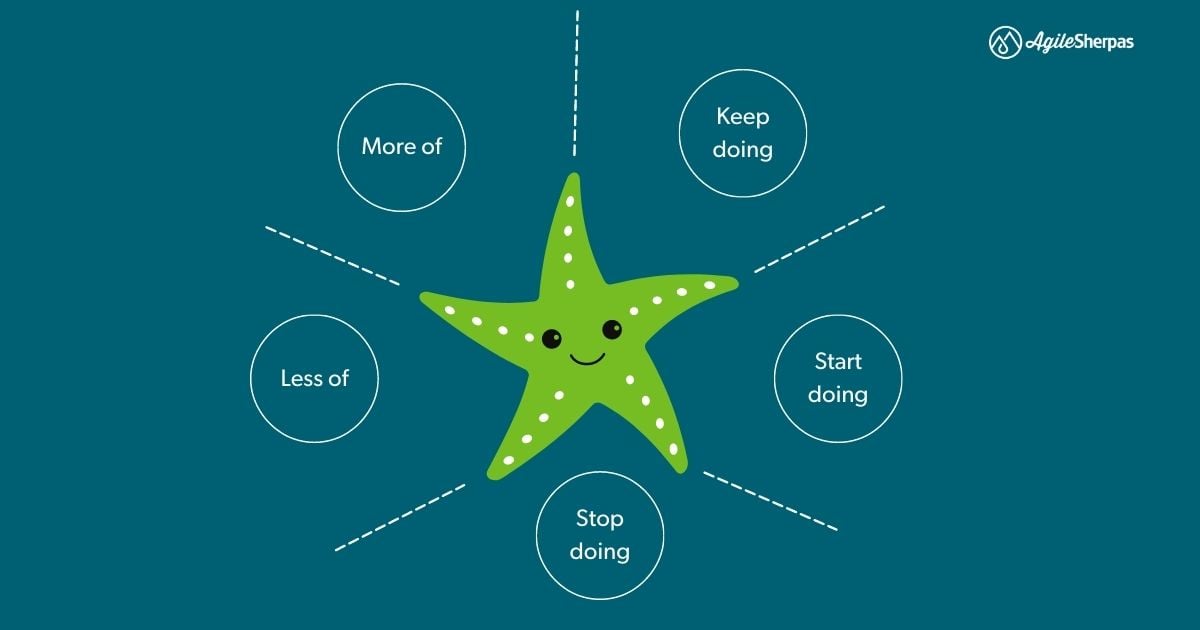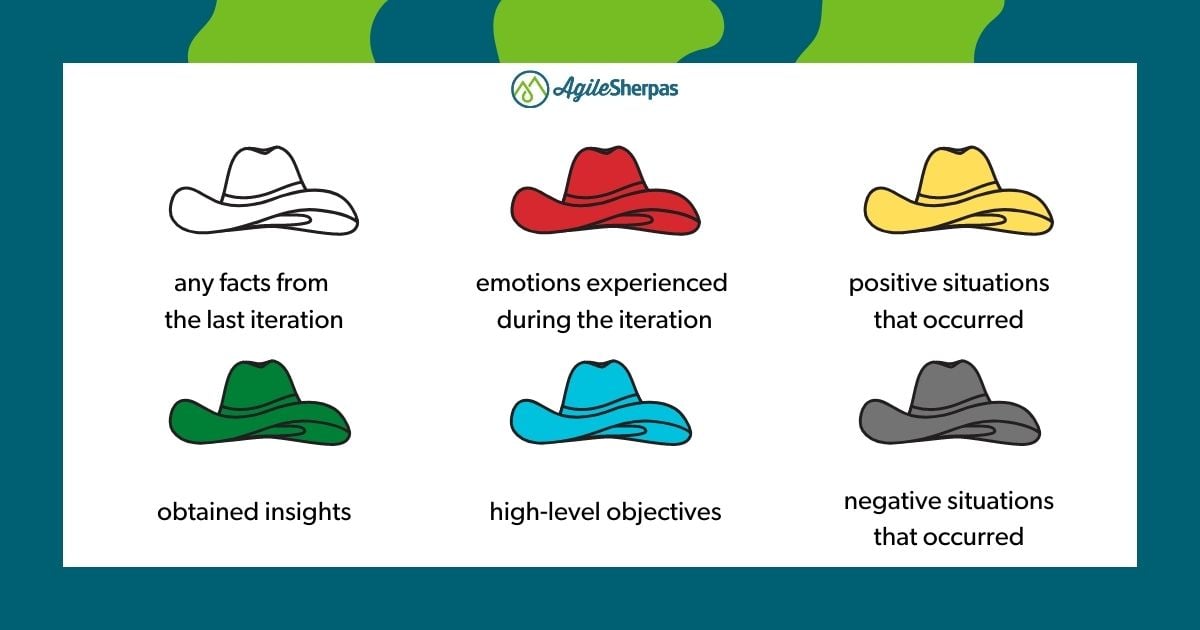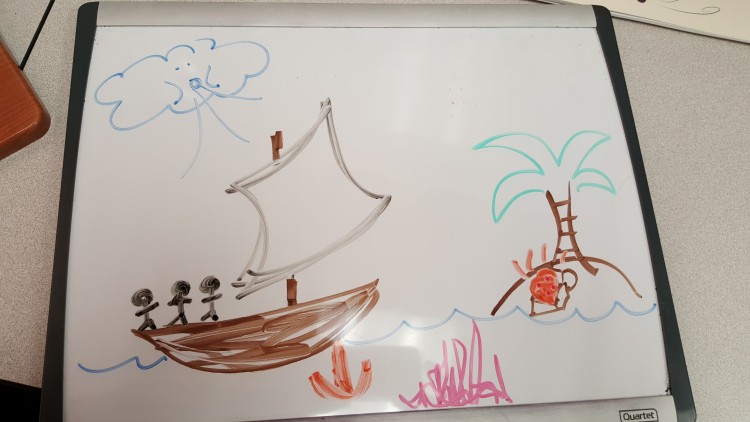Retrospectives hold a special place in all Agile processes. The focus on getting at the heart of what’s working (so you can do more like that) and what’s broken (so you can fix it ASAP) makes retrospective meetings a non-negotiable part of any good Agile team.
For those unfamiliar with the concept, a Retrospective (or Retro) is a meeting during which an Agile team discusses the Agile process and how to make it better.
Scrum teams will talk about their last sprint, while non-Scrum teams might discuss their latest project or simply the past few weeks or month.
Retrospective Prime Directive:
Regardless of what we discover, we understand and truly believe that everyone did the best job they could, given what they knew at the time, their skills and abilities, the resources available, and the situation at hand.
While the topic is fairly standard, the format of the meeting is highly flexible. It’s up to the team to figure out how best to structure discussion so they can really dig in to their team and its processes.
After a few iterations it can be hard to keep the meeting fresh, but boring retros can very quickly lead to stagnant teams. When you’re looking for a way to spice things up you can try these new Retrospective tactics.
Retrospective Rules

For those who aren’t Retro veterans, here’s a quick overview of the “rules”:
- Agile team members only. No stakeholders or outside observers are allowed. The Scrum Master is welcome (and often runs the meeting), but the Product Owner and other management are not. Freedom to speak your mind is paramount.
- Keep it civil and positive. The discussion is about the process, not the people. Obviously sometimes people impact process, and that’s completely fair game to address. Just make sure you don’t let your Retro degenerate into a blame game.
- Focus on actionability. This is a time for the team to vent a little, but keep your eye on the prize, which is improving the process. Keep yourselves accountable to identifying things your team can fix, and then assigning people to own those solutions.
The Importance of Agile Marketing Retrospectives
Before we jump into some Retro types that have worked particularly well for a few teams we've worked with, I want to clarify why this meeting might be even more important for Agile marketing teams than for Agile development teams.
Even the most cohesive marketing team isn’t always going to be working on the same things.
Sometimes it might be related — some people creating email, others ebooks, and others social media campaigns targeting the same personas — but other times there is little overlap among projects.
This can make it difficult for agile team members to have real empathy for the other folks on our team. Even with daily standup meetings we don’t know everything they’ve had to deal with during the past couple of weeks to get their share of the work done.
Retrospectives make it easier to get insight into the emotional and psychological factors that can drive a team to victory or doom it before the sprint even starts. There’s no burndown chart, no checklists, and no stakeholders.
It’s just the team talking about the team and its process.
Don’t shortchange yourselves. Make time for comprehensive retrospective meetings. They should be at least an hour, and there’s nothing wrong with a two-hour retro. Chocolate can often help.
Agile Marketing Retro Idea #1: What Went Well…
The typical format for a Retrospective is to have the team discuss three simple topics: what should we START doing, what should we STOP doing, and what should we CONTINUE doing.
While elegant in its simplicity, a Retro structured around these three topics tends to sound a lot like the last two (or three or ten) meetings that asked these same questions.
Our first foray into trying out a different topic doesn’t sound like a huge change, but simply adjusting the wording of the questions can force a team to think about their input in new ways.
You might ask yourselves these three questions:
- What went well?
- What went poorly?
- What should we change?
It can also help to add space at the end of the meeting for appreciating our team members, which creates an awesome space to shout out to people who really went above and beyond in the last sprint.
The interesting thing about these questions is that they’re a little more neutral. They let us talk more about external factors that were impacting our team instead of just things that WE as a team could or should do/not do.
Agile Marketing Retro Idea #2: Mixing it Up
When you want to break out of the three question format but still want to direct conversation, you can try a grab bag of different question types.
One Retro with a team featured these topics:
- Describe this past sprint in one word.
- What’s something that caused problems last sprint?
- If you could change one thing about the last sprint what would it be?
- What don’t we know yet?
I wasn’t sure about that last question before the meeting, but it gave our team something really new and interesting to talk about.
But my favorite question was the first.
The huge variety of words that the team members used to describe the sprint was revelatory, especially because there were patterns within groups who worked on similar projects.
Agile Marketing Retro Idea #3: Setting Sail
When you really need to shake things up, tap into your inner artist and draw a scene on a whiteboard or giant sheet of paper. One of our best Retros featured this image:
Each section represents a different part of the team’s experience. Ask your team to spend 5-10 minutes writing down their feedback — good and bad — about each part on sticky notes. They should then put their note up next to the appropriate area.
- The clouds are something like, “Wind in our sails,” things that helped push us toward our goals.
- Those little blobs on the boat are supposed to be people, i.e. your team members. Any input about the team goes here.
- At the bottom of the boat is an anchor. Notes here should be about things that were holding the team back from achieving their goals.
- The island on the far right is the sprint objective or goals. If there’s any feedback about those — too broad, ill-defined, or really great — team members stick those notes here.
- Finally there’s the coral (yes, it’s coral). These are unseen assumptions that could sink the team, either in the past sprint or in the future.
After all the sticky notes are up you just have the Scrum Master or meeting leader read the notes and ask the author to talk about them.
Bonus: This method also lets quieter team members get their ideas out front and center in a low-pressure way.
Agile Marketing Retro Idea #4: Starfish

The Starfish retrospective format originated in 2006 as an even more creative method for running retrospective meetings than its predecessors. It is simple and yet extremely effective for boosting transparency and improving decision-making during your team reflection meeting.
If you want to spice things up and introduce a fresh retrospective format to your team, this is a perfect choice. Besides escaping the routine of traditional retros, the Starfish enables you to analyze the behaviors that are prevalent among team members and continually impact the marketing process.
During a Starfish retro, each team member is encouraged to consider and document behaviors that the team should:
- Stop doing (because it's holding them back)
- Start doing (to progress forward)
- Keep doing (to remain consistent)
- Do more of
- Do less of
Focusing your attention on each of these five areas of our work, helps the team to:
- Identify and eradicate practices that don’t bring value to the marketing process
- Select new ideas to test for improving the process
- Highlight activities or practices that have proven to be impactful and should remain part of the process
- Agree on areas of the process that deserve more attention
- Point out practices that require a significant effort but don’t bring worthwhile value to the team
The Starfish retrospective format is extremely actionable. To apply it, you don’t need to deviate from the standard rules of running retros, only change the angle from which you look at your process. Facilitators should keep track of action items that emerged from the retrospective in order to bring them into the team's next sprint and allocating capacity in this direction.
Agile Marketing Retro Idea #5: 4Ls
The fifth retrospective idea on our list is widely adopted among software development teams and is perfectly suitable for analyzing marketing processes as well. The 4Ls that represent the foundation of this retrospective format stand for Liked, Learned, Lacked, and Longed for.
It is a good choice for escaping the routine of traditional retros occasionally. By applying it, you can facilitate a meeting that teases out the honest opinions of the people on the team. These four Ls are traditionally discussed by team members in an informal environment.
By facilitating an official retrospective around them, you can gather all the opinions and desires of the team in a single place and take action to improve the marketing process based on them. As the 4Ls might sound a bit abstract by themselves, here are a few examples of possible ideas that might find representation in each category:
- Liked feeling empowered to make decisions about the tasks in the workflow, collaborating naturally without the need for involvement by the marketing owner
- Learned that there is a simpler way to deliver performance reports, that a new team member is skilled in an area where we lack capacity
- Lacked stakeholder alignment on key marketing campaigns, the necessary tools to collaborate effectively with remote team members
- Longed for more time to polish marketing deliverables, additional capacity for processing advertising assignments
The 4Ls retrospective format is great for facilitating casual discussion about the team’s process and how everyone feels about it. To apply it, use a simple visualization mechanism like four Kanban columns to represent each L and sort your thoughts.
Agile Marketing Retro Idea #6: Wish and Wonder
Wish and Wonder is another highly effective retrospective format worth trying with your team. It is especially suitable for creative teams because it encourages them to consider their process outside the box.
At the core of Wish and Wonder stands the goal of gathering quick feedback regarding the team’s process. Marketing teams leverage four key quadrants to categorize the topics in discussion:
- I like (aspects of the process that made me feel empowered, helped me move forward)
- I wish (aspects of the process that I hoped would be better, that I hope will get better in the future)
- I wonder (aspects of the process that are unclear to me, that I would like to understand more about)
- What’s next (forward-looking aspects of the process, next steps to improve)
Separate your thoughts in 4 quadrants. In the first quadrant, list all the positive things that happened during the time since the last retro. After that, proceed to add any changes that might affect the process positively in the future.
“I Wonder” is the most unique quadrant and will likely be the most engaging part of the retrospective. Contributions to this category can be both positive and negative as well as risks that the team believes are worth mitigating or opportunities worth exploring.
For example, the team might wonder if there is a way to automate a manual process that has been slowing them down, or whether there is a better tool to use for processing a specific type of work (e.g. email marketing campaigns) in a better way.
Including “What’s Next” in the retrospective means capturing the actions each person intends to take based on the information collected during the meeting.
Agile Marketing Retro Idea #7: Six Thinking Hats

The Six Thinking Hats is a retro format that facilitates a bird's eye view of the marketing process and team dynamics surrounding it. It provides a very diverse view of each by encouraging team members to wear six imaginary hats that represent different perspectives on how the team is functioning as a unit.
Each hat has a different color and symbolizes a specific part of the team’s work:
- White hat - any facts collected from the last iteration
- Red hat - emotions experienced during the iteration (no more than 2 per person)
- Yellow hat - positive situations that occurred during the sprint
- Green hat - obtained insights & learnings from the sprint timebox
- Blue hat - high-level objectives and next steps
- Black hat - negative situations that occurred during the sprint
Visualize each hat as a column on a digital visual management board or whiteboard without keeping to a particular order. The facilitator can decide which hat to introduce first, depending on the team's shared experiences from the sprint.
To start the retrospective, dedicate a time slot during which team members will wear each hat. The blue and red hats should only be worn for 5 minutes, while more focus should be dedicated to the others.
After you go through the six thinking hats, take a few minutes to draw conclusions from the discussion and turn them into actionable items for the next iteration of work.
What’s Your Best Retrospective Format?
What type of questions get your team talking? We’d love to hear from your team in the comments so we can all have more candid discussions with our agile marketing teams! Also, have a look at this additional Retrospective Exercise Repository.




